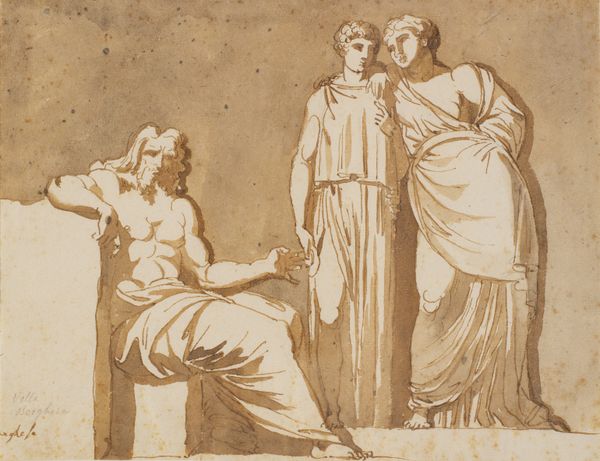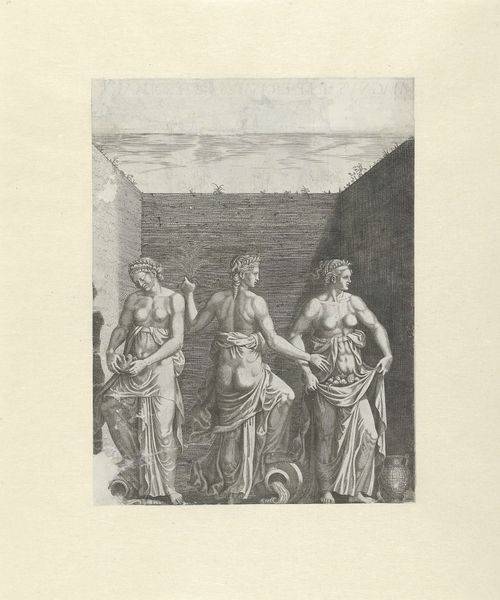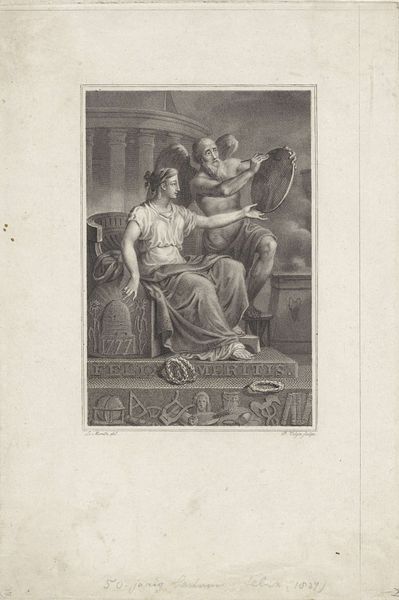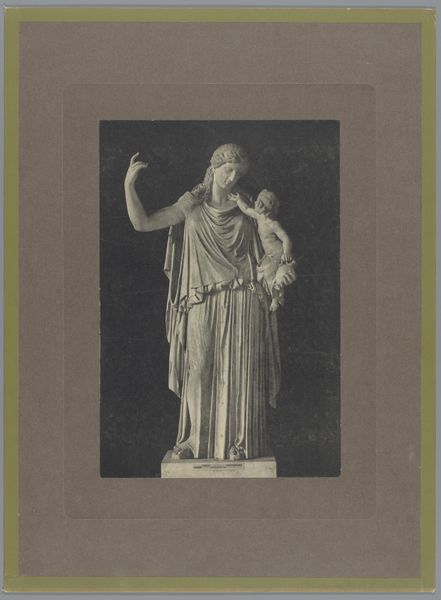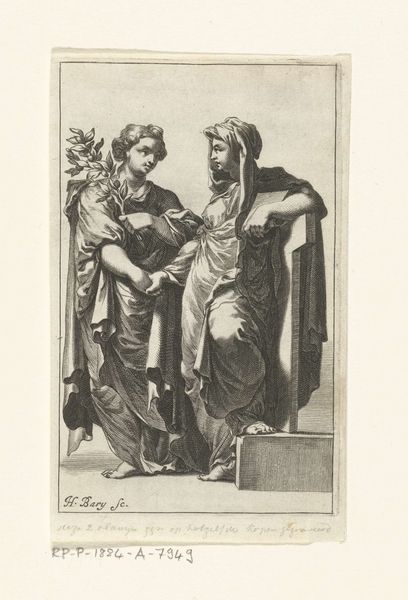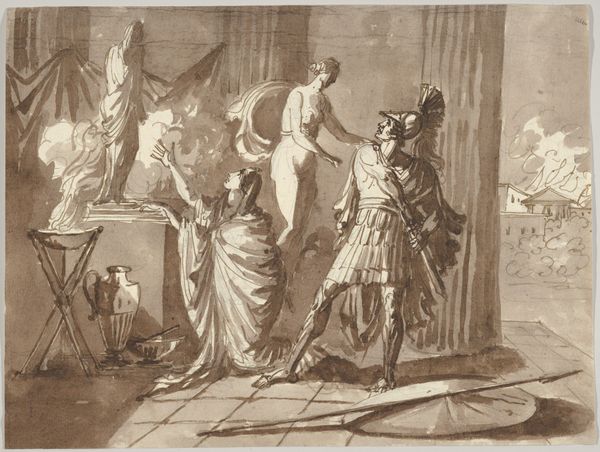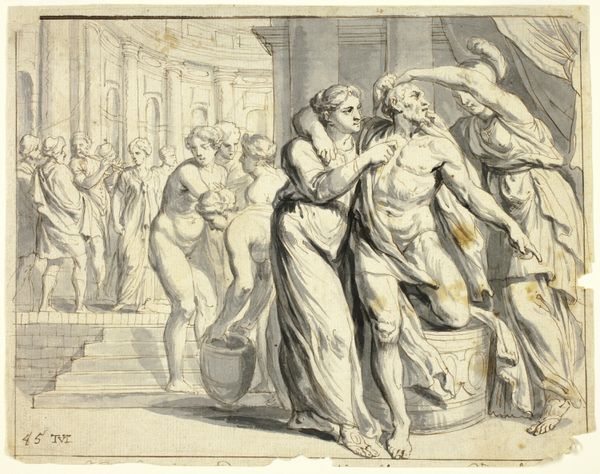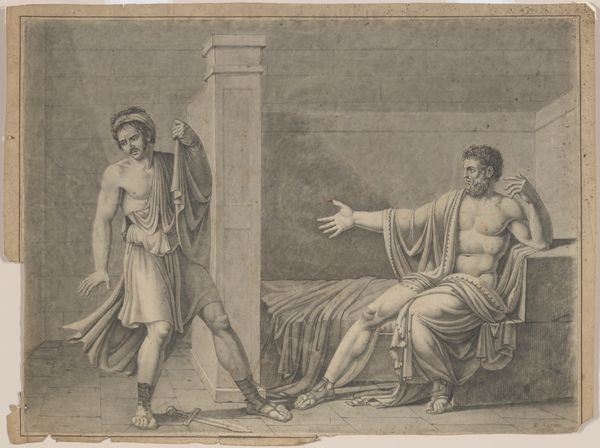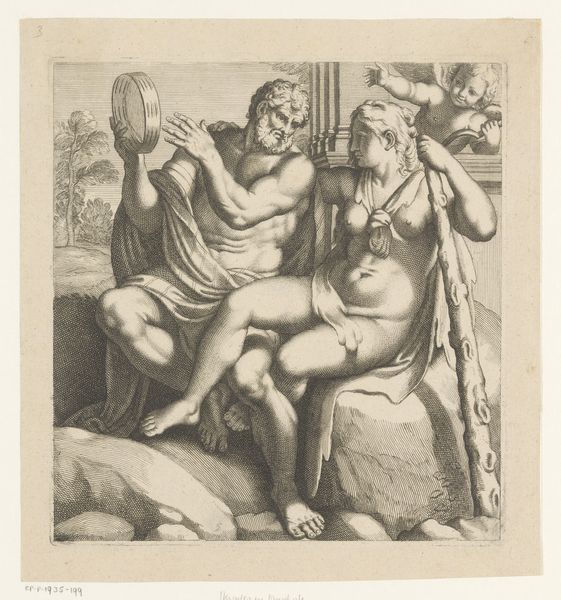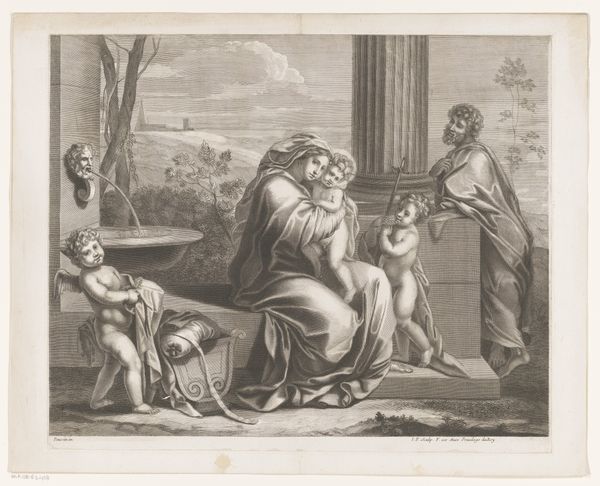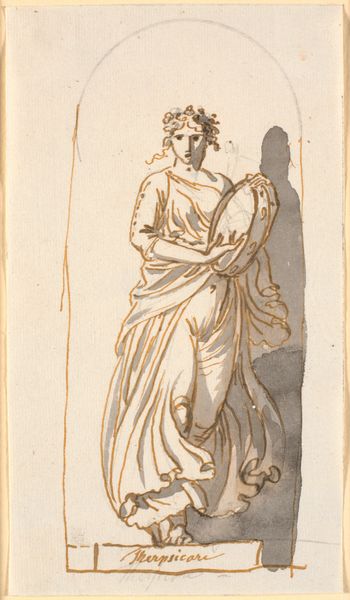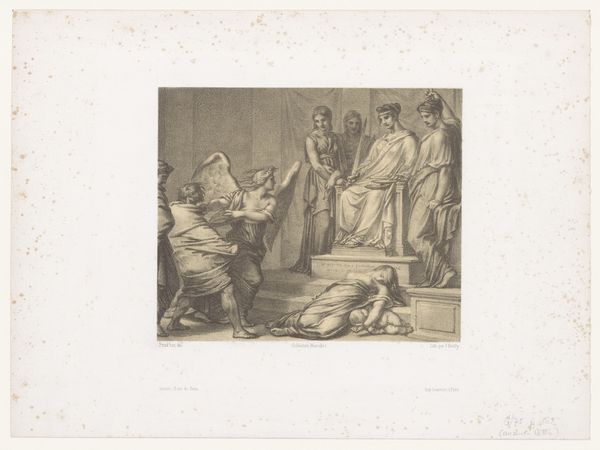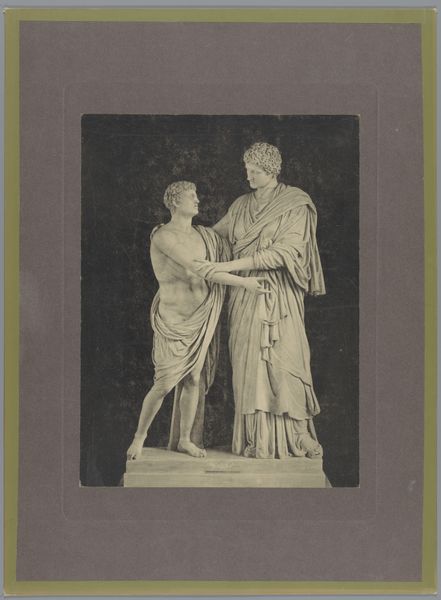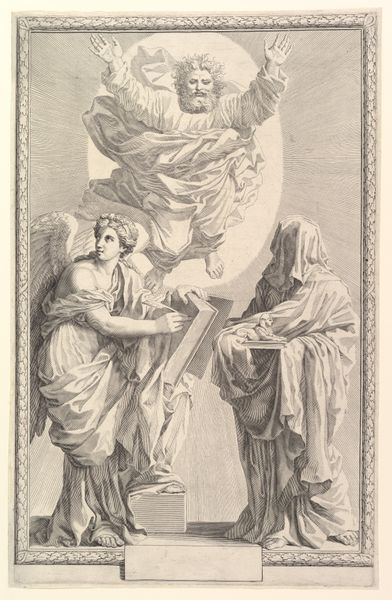
drawing, pencil
#
portrait
#
pencil drawn
#
drawing
#
neoclacissism
#
narrative-art
#
figuration
#
ancient-mediterranean
#
pencil
#
line
#
history-painting
#
academic-art
Dimensions: 289 mm (height) x 349 mm (width) (bladmål)
Editor: This drawing, "Antikt motiv" by Mary Sophie Clarck, made sometime between 1800 and 1880, gives off such a dramatic feeling. I’m struck by the classic, almost theatrical composition using only pencil and paper. What’s your interpretation of this work? Curator: As a materialist, I find it fascinating to consider the *labor* involved in producing such a precise drawing with something as simple as a pencil. Consider the access to materials, the quality of the paper, the production of the pencil itself. These aren’t neutral tools; they speak to the social and economic context of the artist. Do you see how the clean lines evoke Neoclassicism, yet the chosen medium allows for mass production and circulation via prints? Editor: That’s interesting. I hadn’t considered the socioeconomic implications of the medium itself. So, the drawing, even as a study perhaps, would have been more accessible than, say, an oil painting in conveying these classical narratives? Curator: Precisely! The materiality here challenges the traditional hierarchy separating 'high art' from the more reproducible art. How do Clarck’s choice of subject and style contribute to, or perhaps critique, that hierarchy? Editor: I see your point. By using such a readily available material to depict this classical scene, she's both engaging with the style and potentially democratizing its reach. That's really given me a new perspective on how the materials themselves carry so much meaning. Curator: And that meaning continues to evolve based on when, where, and by whom it is consumed, doesn’t it? Thinking about art in terms of production, materials, and consumption can radically alter our understanding of it.
Comments
No comments
Be the first to comment and join the conversation on the ultimate creative platform.
